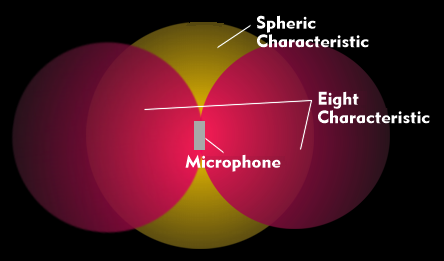middle/side stereo (MS)
While in stereophony the audio signals for the left and right sides are recorded, processed and played back separately, M/S stereophony works with a center signal and a side signal.
The center signal is the sum signal (L+R) and includes all signals that are identical for the left and right sides. The side signal is the difference signal (L-R) and includes the signal differences between the left and right channels. From the center signal (M) and the side signal (S), the individual signals for the left and right channels can be reproduced: L=(M+S)/2, R=(M-S)/2.
The M/S method has some advantages over classical stereo. Especially when there are hardly any differences between the two sides, the center signal represents the complete audio signal and can be used directly for monophonic recording and transmission.
The main difference between M/S stereophony and classical stereophony lies in the recording technique, in which the two microphones for the M and S signals must be as close together as possible, or better yet, can be housed in the same enclosure and differ in directional characteristics. This means that there are no differences in propagation time and thus no comb filter effects. While the microphone for the M signal must have an omnidirectional or cardioid polar pattern, the microphone for the S signal operates with a figure-of-eight polar pattern, with its axis angle offset by 90°. As a result, the two circular lobes of the figure-of-eight characteristic capture the sounds from both sides.
M/S stereophony has excellent monophonic reproduction and is used in radio and television, but also in joint stereo.

